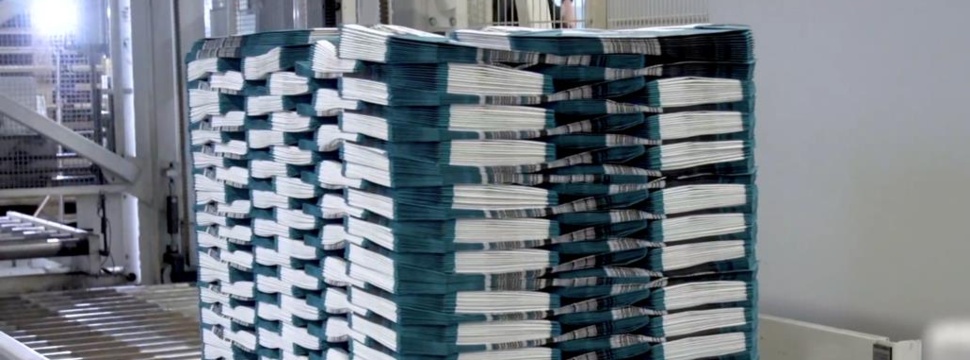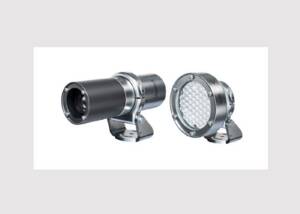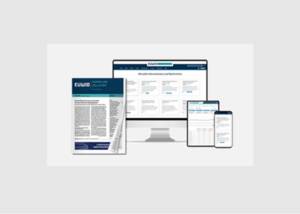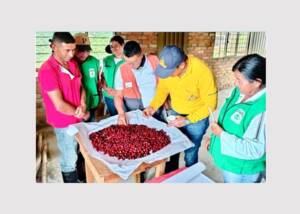Achieving the climate targets with the paper sack
News General news
The EU sets ambitious targets for the decarbonisation of Europe. By 2030, emissions are to be reduced by at least 55% below the 1990 level.

20 years later, climate neutrality is even on the agenda. This article shows which measures the Gemeinschaft Papiersackindustrie e.V. (GemPSI) is taking to achieve this goal. (GemPSI) wants to make its packaging solutions, production and supply processes even more sustainable in order to achieve green zero - and why paper sacks are the right choice for fillers looking for climate-friendly packaging.
From extreme weather conditions such as droughts and floods to declining biodiversity - climate change affects the whole world. To limit the consequences, global warming must be limited to 1.5 degrees Celsius - through climate neutrality. In other words, all greenhouse gas emissions must be offset by carbon sequestration. This means producing as little CO2 as possible and offsetting unavoidable production elsewhere. The European paper sack industry has already made great progress in reducing its emissions from 2007 to 2018, improving the fossil carbon footprint of the average paper sack by 28% (from 118 g CO2e to 85 g CO2e) . "An important building block for reducing emissions in paper sack production is sustainable energy management," explains GemPSI member Reinhard Schulze-Edinghausen. "When purchasing electricity, for example, we make sure that it comes from renewable sources as far as possible and that it is used efficiently."
The warm exhaust air from production is also used to heat the factory halls in the winter months. This saves a large amount of heating fuel.
Efficiency is the trump card
Other examples of efficiency improvements in energy use range from the widespread use of LEDs to the modernisation of production facilities in order to be able to produce a larger number of paper bags in less time with the same amount of energy. And where fossil fuels were used just a few years ago, alternatives are now being used. "In my company we have completely switched to e-forklifts and provide our employees with e-bikes. The bikes are very popular, not only on the factory premises," says Reinhard Schulze-Edinghausen. Last but not least, customers and suppliers are also involved. One example is mutual agreements to optimise logistics processes in order to deliver the goods with the most utilised trucks and short transport routes.
Less is more
On the way to a climate-neutral product, efficiency plays an important role not only in logistics and production, but also in materials. In recent years, German paper sack manufacturers have already achieved considerable reductions in this area thanks to increasingly tear-resistant kraft papers. "Grammages of 70 g/m2 are no longer a rarity where 90 g/m2 used to be used. So today we can produce more paper sacks with the same tonnage of material than a few years ago," explains Schulze-Edinghausen. "And by means of high-performance barrier layers, we save up to 50 per cent of this material - without our customers having to forego functions such as water vapour protection or a long shelf life." Films that consist proportionately of recycled material are also increasingly being used. German paper sack manufacturers are also working on sacks that do not require any film at all and have properties that could originally only be achieved with the use of plastic. In this area, the German paper sack industry sees further potential in terms of efficiency increases and resource conservation. "Responsible use is particularly important against the background of the current shortage of raw materials," says Reinhard Schulze-Edinghausen. "An important aspect here is also recycling, so that raw materials remain in the material cycle as long as possible. Here, paper sacks score with another climate benefit: their long, tear-resistant fibres are particularly well suited for recycling."
A well-functioning recycling system
GemPSI introduced the established REPASACK take-back system for the recycling of kraft paper sacks about 30 years ago. The company recycles more than 20,000 tonnes of kraft paper sacks from industry and commerce every year. The paper sack manufacturers even recycle their production residues in accordance with a "zero waste" approach. This ensures that the valuable, long kraft paper fibres are recycled according to type and processed into a high-quality secondary raw material. This can be used proportionately in other kraft paper products, such as carrier bags, and thus replace the primary raw material. "Of course, this also has a positive impact on the climate. Because every tonne of recycled paper fibre that is processed instead of virgin fibre prevents emissions that would occur in primary paper production," explains Sven Korsten, authorised signatory at REPASACK. "If you consider that even after four recycling cycles, kraft paper fibres can still be used to produce other high-quality paper products, our closed-loop system is an effective lever in the direction of net zero."
Raw material with the best prerequisites
A responsible approach is also taken in the extraction of the primary raw material for paper sacks, cellulose fibre. The fibre is obtained from wood, a natural and renewable resource. For the production of kraft paper, thinning wood and sawmill waste from the wood industry are used, which come from sustainably managed European forests. Sustainable forestry is an essential part of the value chain of paper sacks and makes an important contribution to climate protection. This is because forests act as a carbon sink. According to a study, the world's forests absorb twice as much carbon as they emit per year . Scientists even rate global reforestation as the most effective measure against climate change. If biogenic removals as well as emissions were included in the carbon footprint of paper bags, it would even now be climate positive at -35 gCO2e per bag . "As bio-based and recyclable packaging, the paper sack offers ideal conditions for achieving the climate targets," Reinhard Schulze-Edinghausen sums up.
For more information on the paper sack as an efficient and environmentally friendly packaging, visit papiersack.de.










